#Architectural Criticism
Explore tagged Tumblr posts
Photo
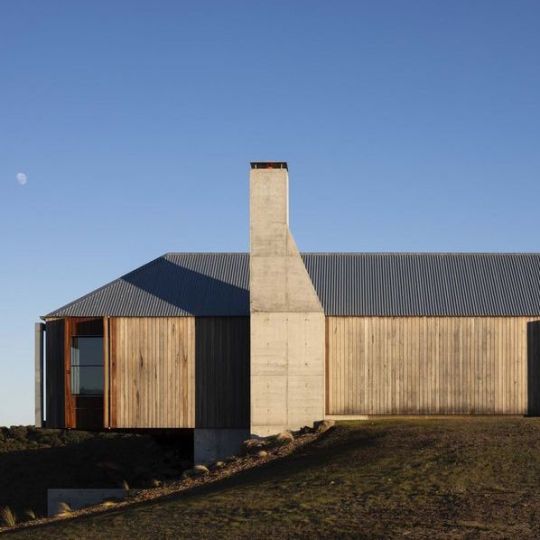
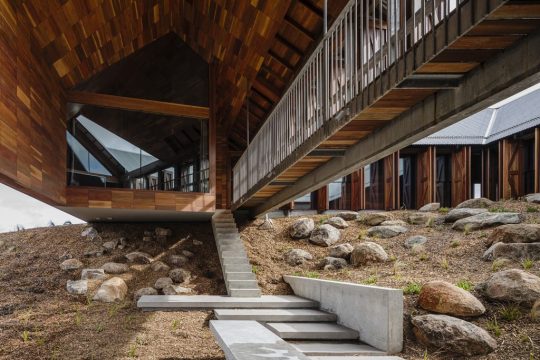
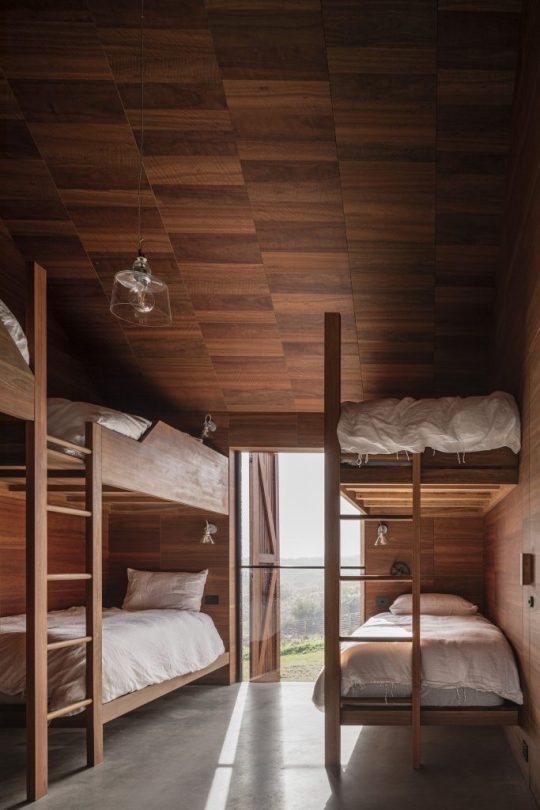
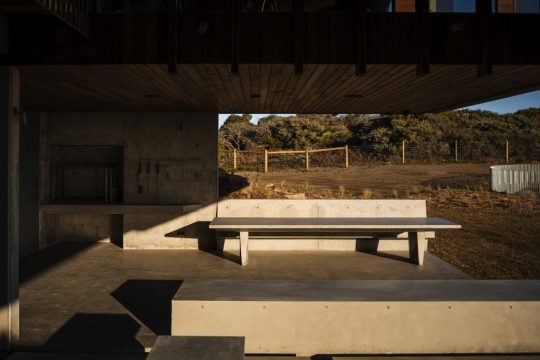

For the Architectural Review
Bass Coast Farmhouse in Victoria, Australia by John Wardle Architects
Calvin Po
For the architectural profession, building on the unceded lands of Indigenous people is a conflicting proposition, yet one that is almost inevitable for architects in Australia. Bass Coast Farmhouse, by John Wardle Architects, is one such project, built on former farmland among coastal heath reserves off the Bass Strait in Victoria. As they do with all their projects, the architects acknowledge the Traditional Owners, in this case the Boonwurrung people of the Kulin Nation.
Between the role of the architect, duty to their client, and wider questions of postcolonial ethics, these tensions permeate the house’s character and its distinctive relationship to the land. The Kulin Nation’s Tanderrum ceremony extends to outsiders a welcome to Country conditional on honouring the land and its intertwined relationships with its people: ‘The land ... is our mother. These cliffs are like our cathedrals, this is our church.’ On this sacral land, the architect’s exploration of ‘the nature of building on terra firma’ is not just an architectural fantasy, but a reflection of this quandary, and rejection of colonial myths of terra nullius – the land is not a blank slate.
From ecological footprint to the architectonics, this sensitivity is omnipresent. The house is entirely off-grid and the construction is largely prefabricated to minimise onsite waste and disturbance. The house sits gingerly on the ridge of a dune, making only the necessary contact with the ground. It is then cantilevered as the dune falls beneath the house. The cantilever, with its barn-like void and its suspended walkway, evokes an archaeological shelter, spanning over and shielding artefacts, and framing them for display. To enter the house, a set of stairs descends from this walkway as if down into geological strata of times past.
As for what is being sheltered – the dune and a scattering of stones – they too become imbued with new significance. After centuries of European colonisation, few traces of Boonwurrung heritage remain. It is the land itself, and the Boonwurrung people’s intergenerational custodianship of it, which is left to be protected. A critical part of the project is repairing parts of the site degraded by modern agricultural extraction, with a specialist advising on a massive replanting project for carefully restoring indigenous grass, shrub, and tree species. In contrast with the landscape, the house’s timber cladding (already silvering in the antipodean sun) and the corrugated galvanised steel roof seem to acknowledge its fleeting presence, relative to the long histories of the Kulin Nation.
The house is the antithesis of being ‘monarch of all [it] surveys’, to quote William Cowper’s poem on Alexander Selkirk, the British castaway in the Pacific. The Anglocentric ideals of Capability Brown’s Picturesque landscapes, where the earth itself is reshaped for the pleasure of the house’s gaze, are rejected. All the outward-facing windows, including the living room’s picture window, can be shuttered at a moment’s notice. For a house surrounded by expanses of nature and the coast, it is surprisingly introspective, with its primary aspect oriented around the central courtyard. The house is also extensive for a single-storey family home, with beds and bunks in polished, timber-panelled rooms, accommodating over a dozen people. But rather than bearing down on the terrain or asserting its panoramic dominion, the house seems to recognise that the views and the land are on loan, not owned.
John Wardle Architects, with its recently inaugurated Reconciliation Action Plan, joins others in Australia in re-evaluating their relationship with First Nations. But in the end, the impact a private house can have on reconciliation is limited. As Carolyn Briggs, a senior Boonwurrung elder, once reflected, ‘I’m always trying to find markers that inform me that we still have a part in this place. ... I think it would be amazing if you can start to read the land and wonder about the history of the people who lived and died before we were here. Hopefully one day you’ll know it. But we can’t see that now in the built environment.’
Link to original article here.
#writing#journalism#architectural writing#architectural criticism#critique#architectural journalism#New Architecture Writers#building#building study#building review#architecture#Architectural Review#John Wardle Architects
2 notes
·
View notes
Text
Edwin Lutyens: Architect Laureate :: Roderick Gradidge

View On WordPress
#0-0472-0023-5#architects#architects biographies#architects biography#architects memoirs#architectural criticism#architectural design#architectural history#baroque architecture#books by roderick gradidge#british architects#british architecture#christian architecture#edwin landseer lutyens#english architects#fin de siecle#first edition books#georgian vernacular#gertrude jekyll#gothic architecture#historical architecture#history architecture#modernism#neo-classicism#neoclassicism#palladianism#renaissance architecture#romanesque architecture#vernacular houses
1 note
·
View note
Link
0 notes
Text
Braius: we sound like the gods
Matthew Mercer:

#critical role#cr spoilers#op#c3#c3e104#matthew mercer#matt like yessss yEESSSSS#my SCHEMES my PLANS my NARRATIVE ARCHITECTURE
481 notes
·
View notes
Text
"The most fashionable bathing station in all Europe". British industrialists and American mining investors plotting the colonization of the Congo, while mingling at Ostend's seaside vacation resorts. Extracting African life to build European railways, hotels, palaces, suburbs, and other modern(ist) infrastructure. "Towards infinity!"
---
In 1885, King Leopold II achieved an astonishing and improbable goal: he claimed a vast new realm of his own devising, a conjury on a map called [...] the Congo Free State. [...] [A] fictional state owned by the king, ruled by decree, and run from Brussels from 1885 to 1908. [...] This was [...] a private entrepreneurial venture [for the king]. The abundance of ivory, timber, and wild rubber found in this enormous territory brought sudden and spectacular profits to Belgium, the king, and a web of interlocking concession companies. The frenzy to amass these precious resources unleashed a regime of forced labor, violence [millions of deaths], and unchecked atrocities for Congolese people. These same two and a half decades of contact with the Congo Free State remade Belgium [...] into a global powerhouse, vitalized by an economic boom, architectural burst, and imperial surge.
Congo profits supplied King Leopold II with funds for a series of monumental building projects [...]. Indeed, Belgian Art Nouveau exploded after 1895, created from Congolese raw materials and inspired by Congolese motifs. Contemporaries called it “Style Congo,” [...]. The inventory of this royal architecture is astonishing [...]. [H]istorical research [...] recovers Leopold’s formative ideas of architecture as power, his unrelenting efforts to implement them [...]. King Leopold II harbored lifelong ambitions to “embellish” and beautify the nation [...]. [W]ith his personal treasury flush with Congo revenue, [...] Leopold - now the Roi Batisseur ("Builder King") he long aimed to be - planned renovations explicitly designed to outdo Louis XIV's Versailles. Enormous greenhouses contained flora from every corner of the globe, with a dedicated soaring structure completed specifically to house the oversize palms of the Congolese jungles. [...]
---
The Tervuren Congo palace [...]. Electric tramways were built and a wide swath of avenue emerged. [...] [In and around Brussels] real estate developers began to break up lots [...] for suburban mansions and gardens. Between 1902 and 1910, new neighborhoods with luxury homes appeared along the Avenue [...]. By 1892, Antwerp was not only the port of call for trade but also the headquarters of the most profitable of an interlinking set of banks and Congo investment companies [...]. As Antwerp in the 1890s became once again the “Queen of the Scheldt,” the city was also the home of what was referred to as the “Queen of Congo companies.” This was the ABIR, or Anglo-Belgian India Rubber Company, founded in 1892 with funds from British businessman “Colonel” John Thomas North [...].
Set on the seaside coast, Belgium’s Ostend was the third imperial cityscape to be remade by King Leopold [...] [in a] transformation [that] was concentrated between 1899 and 1905 [...]. Ostend encompassed a boomtown not of harbor and trade, like Antwerp, but of beachfront and leisure [...] [developed] as a "British-style" seaside resort. [...] Leopold [...] [w]as said to spend "as much time in Ostend as he did in Brussels," [...]. Ostend underwent a dramatic population expansion in a short period, tripling its inhabitants from 1870–1900. [...] Networks of steamers, trams, and railway lines coordinated to bring seasonal visitors in, and hotels and paved walkways were completed. [...] [A]nd Leopold’s favorite spot, the 1883 state-of-the-art racetracks, the Wellington Hippodrome. Referred to with an eye-wink as “the king incognito” (generating an entire genre of photography), visitors to the seaside could often see Leopold in his top hat and summer suit [...], riding his customized three-wheeled bicycle [...]. By 1900, Ostend’s expansion and enhancement made it known as “the Queen of the Belgian seaside resorts” and “the most fashionable bathing station in all Europe.” Opulence, convenience, and spectacle brought the Shah of Persia, American tycoons, European aristocrats, and Belgian elites, among others, to Ostend.
---
Leopold’s interventions and the Congo Free State personnel and proceeds played three pivotal and understudied roles in this transformation, all of which involved ABIR [British industrialists].
First, it was at Ostend that an early and decisive action was taken to structure the “red rubber” regime and set it in motion. In 1892, jurists such as [E.P.] had ruled, contravening [...] trade laws, that the king was entitled to claim the Congo as his domanial property [...]. Leopold [...] devised one part of that royal domain as a zone for private company concessions [...] to extract and export wild rubber.
Soon after, in 1892, King Leopold happened to meet the British “Colonel” John Thomas North at the Ostend Hippodrome. North, a Leeds-born mechanic [...] had made a fortune speculating on Chilean nitrates in the 1880s. He owned monopoly shares in nitrate mines and quickly expanded to acquire monopolies in Chilean freight railways, water supplies, and iron and coal mines. By 1890 North was a high-society socialite worth millions [...]. Leopold approached North at the Ostend racecourse to provide the initial investments to set up the Anglo-Belgian India Rubber Company (ABIR). [...]
---
One visible sign of Ostend’s little-known character as Congo boomtown was the Royal Palace Hotel, a lavish property next to the king’s Royal Domain, which opened in 1899. With hundreds of rooms and a broad sweep of acreage along the beachfront, the palace “occupied the largest space of any hotel in Europe.” [...]
King Leopold met American mining magnate Thomas Walsh there, and as with North, the meeting proved beneficial for his Congo enterprise: Leopold enlisted Walsh to provide assessments of some of his own Congo mining prospects. The hotel was part of [...] [a major European association of leisure profiteers] founded in 1894, that began to bundle luxury tourism and dedicated railway travel, and whose major investors were King Leopold, Colonel North [...].
At the height of Congo expansionism, fin-de-siècle Antwerp embodied an exhilarated launch point [...]. Explorers and expeditioners set sail for Matadi after 1887 with the rallying call “Vers l’infini!” (“towards infinity!”) [...].
---
Text above by: Debora Silverman. "Empire as Architecture: Monumental Cities the Congo Built in Belgium". e-flux Architecture (Appropriations series). May 2024. At: e-flux.com/architecture/appropriations/608151/empire-as-architecture-monumental-cities-the-congo-built-in-belgium/ [Bold emphasis and some paragraph breaks/contractions added by me. Italicized first paragraph/heading in this post was added by me. Presented here for commentary, teaching, criticism.]
#tidalectics#ecology#multispecies#abolition#this full article has far more info about leopolds obsession with opulence and all the many infrastructure projects in belgium he sponsored#full article also expands more on congolese art and anticolonial art projects that criticize belgian architecture#eflux did several articles focusing on anticolonial responses to belgian extraction and art noveau and modernist architecture#including a piece on spectacle of belgian worlds fair and human zoos#silverman has very extensive research history#ecologies#geographic imaginaries
130 notes
·
View notes
Note
Gods I feel you I'm only 10 hours in after having received the game as a gift and I REALLY try to like it but it just ... doesn't feel like Dragon Age. Characters know stuff they shouldn't know about, the game keeps talking down to me, nothing I did in the previous games mattered, the tone is completely different, the mature storytelling of the previous games seems to be missing so far & what I heard so far of how the lore and the characters from previous games have been handled is honestly the worst part and breaks my heart. idk even if i wanna finish the game at this point anymore, I'm just kinda ... sad.
I'm so sad and disappointed, too, I remember our conversations, fics, and headcanons about DA! We were so excited and happy, because Inquisition, DA2, and DAO were genuinely well-made and aimed at pleasing the fans, despite their faults.
DATV is a good action game, no doubt about that. The combat is fun, there is a lot to explore and discover, and many locations are beautiful, even though some are terrible to navigate (Dock Town's structure makes no sense). But that's it - it's a good action game with the name "Dragon Age" pasted on it. It doesn't feel like it's part of the series, it constantly treats the player like an idiot, some references to past games and characters are literally hidden in the brief descriptions of the mementos, and there is even a Glossary to make sure the new players don't get frustrated.
Everything is safe and aseptic, cleaned of every deep piece of lore that could have scared new fans into buying or continuing the game. Even the banters lack the depth of the previous games.
A good game company should lure new players in not by rejecting their past entries, but by making them look even more interesting with their sequels.
Bioware wasn't afraid of offering piece of lore after piece of lore in Inquisition - it was a game set in a precise moment, whose prologue was directly tied to the events of the previous game, and new players had to accept this if they decided to buy it and play it. If they liked that premise, all that information and those details, then they were more than welcome - they were encouraged! - to go back, try the older games, and see how it had all started. It was a game made for the fans the company had already managed to win over, not for possible fans who may or may not bring new money in.
In DATV the new players can jump right in after quickly learning who Solas is and what he's trying to do, and old fans are left with an empty shell, with minor references that are supposed to make us feel happy and accomplished peppered here and there, while all our past choices and our favorite characters are forgotten or brought back with a terrible case of amnesia. It's lazy, infuriating, and very sad, and it smells of reboot, because the new devs probably realized they couldn't keep up with the amount of lore and choices the series contain, and they needed to start anew.
#da:tv critical#andauril#dragon age: the veilguard spoilers#and at this point i also agree with those who criticized the art style#because while some zones are indeed beautiful#the style is absolutely nonsensical#the Grand Necropolis looks like a Disneyland theme park#the characters' facial expressions are even worse than inquisition's#everyone either smirks even when talking about death or stands holding their hands on their belly#the qun symbol and main colors are present in minrathous' architecture - why???#the dalish are suddenly okay with their gods being tyrants and no one is ever called a shem#oh and their magic is also magic technology now#all electricity and 'pathways'#the warden fortress in rivain has fereldan and chantry banners - why???#the wardens aren't associated to either of them#taash's mother makes no sense#there are no parents under the qun#she is their tama at best#but even then since she's a follower of the qun she shouldn't let taash call her 'mother'#also taash saying the qun isn't a prison#my sibling in andraste... if you try to leave you're declared vashoth or tal-vashoth and seen as a traitor#the elven uprising implied in trespasser also never comes to pass#'when the slightest unite a giant will rise'#uh-huh#where are solas' agents? abelas and his sentinels? why aren't they panicking over solas' sudden absence and his failed ritual?#what a mess
47 notes
·
View notes
Text
just watched wicked i think the only possible improvement would be if they kissed on the mouth
#i have been a wicked girlie since middle school this just healed me#the set design. the costume. the acting the VOCALS. ARE IT UP i will not be taking criticism#*ate. help.#actually was so good and this is coming from a remake hater#i just love when you can tell a project was made by people who were passionate about it.#the art deco style and details of all the architecture had me wiggling in my seat#got real chills#the first time i have ever been in a theater of white people clapping and felt compelled to join in#ok bye.#/astro posts
45 notes
·
View notes
Text

Call your reps and demand a ceasefire now
Free Palestine 🇵🇸
#free palestine#palestine#emily blunt#chris evans#critical role#mcu#superman#baldurs gate 3#dark academia#bookworm#marvel#halloween#influencers#stop asian hate#harry potter#steve harrington#architecture#basketball#celebs#celebrities#hot celebs#celebrity news#bay area#tag game#taylor swift#beauty#beach#barbie#ken#star wars
222 notes
·
View notes
Text


The sharp pen of Sibyl Moholy-Nagy (1903-71) was feared by many architects throughout the 1950s and 1960s: for Progressive Architecture, Architectural Forum, Casabella, Bauwelt, Architecture d’aujourd’hui and other periodicals she wrote about contemporary architecture and didn’t hold back her criticism. Unlike many of her colleagues Moholy reflected architecture historically and took a stand for users and inhabitants, a position out of which she criticized Mies van der Rohe’s „facade architecture“.
Her way to becoming an architectural critic, teacher and frequent lecturer nonetheless was stony: born the daughter of a Dresden architect then Sibylle Pietsch, unlike her brother, wasn’t allowed to go to university but instead began an apprenticeship in bookselling which she eventually quit to become an actor in Berlin. Although she acted in different films and plays she eventually became a screenwriter, a position that suited her passion for writing. In Berlin she also met her future husband Laszlo Moholy-Nagy whom she married in 1932 and with whom she went into exile in London and Chicago. Virtually in passing she also gave birth to two daughters.
The death of her husband in 1946, in spite of all the grief, fundamentally changed Sibyl’s life and forced her into an independence that she came to embrace ever more wholeheartedly: living off the occasional sale of her husband’s artworks she had the freedom to lecture on her Laszlo’s work, organize his estate but also write his biography which to this day remains a valuable source.
In 1952 José Luis Sert lured Sibyl to New York to teach architecture at Pratt Institute, a position she received also thanks to some fibs on her CV. With her distinct autodidactic curiosity she also pursued the research into anonymous vernacular architecture that resulted in the book „Native Genius in Anonymous Architecture“, published in 1957.
This adventurous and rich life has been recounted by Hilde Heynen in her lucid and highly readable biography, published in German by Sandstein in 2019, that paints a lively and differentiated picture of a female critic, writer and teacher who was a real rarity in her time.
27 notes
·
View notes
Text
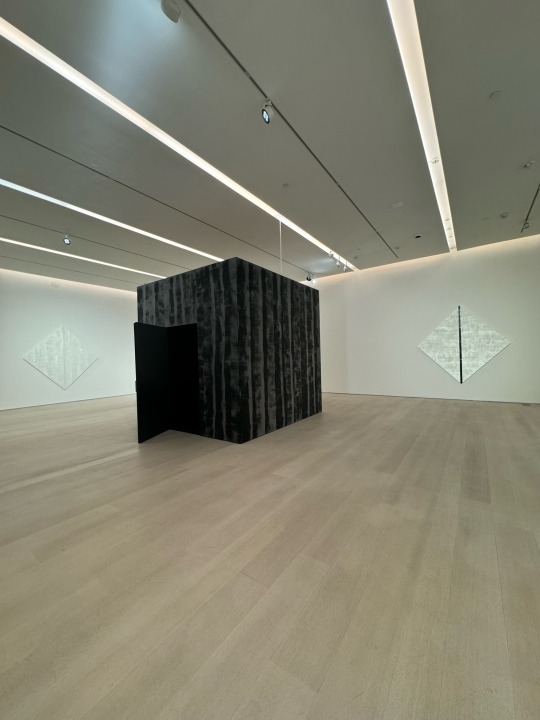

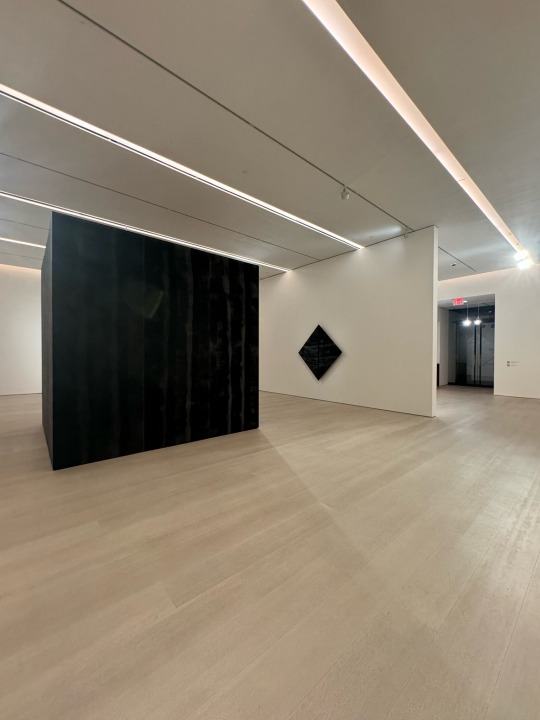

Pace gallery
#detail#critic#conceptual#space#manhattan#nyc#time#installation#minimal interior#gallery#critic critiquing#critiquing#chelsea gallery#pace gallery#interiordecor#interiordesign#interior architecture#minimalist#minimal#minimalism#critique#shapes#reflection#light#persepctive#perception#critical thinking
15 notes
·
View notes
Photo
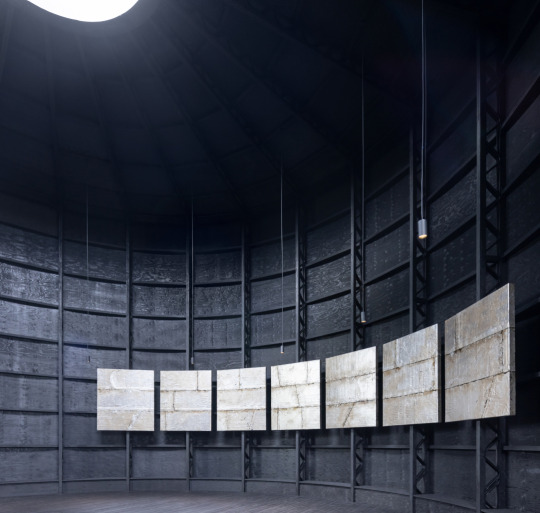
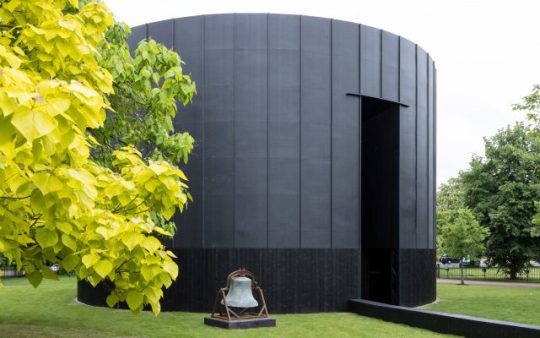

An exhibition/pavilion review:
Ringing Hollow: A Review of Black Chapel, the 2022 Serpentine Pavilion
Calvin Po
It’s perhaps an unfortunate coincidence that on my way to this year’s Serpentine Pavilion, Black Chapel, designed by Chicago-based artist Theaster Gates, I had a rather more spiritual experience when I passed by a group of street preachers on the square next to Speaker's Corner. With their Union Jack bunting draped all around their assembly, placards with JESUS IS LORD, large banners of the English flag adorned a patriotic lion and names of the all the London boroughs proudly proclaiming LONDON SHALL BE SAVED. Puncturing through even my atheistic, bemused scepticism, the blaring music and odd bursts of song had a patriotic, messianic energy that was electric. By the time I got to the Chapel I came to see, it had simply been upstaged.
Pavilions have often mattered more for the reason they are built, than the actual functions they house. From completing the composition of a Picturesque landscape, to Mies van der Rohe’s Barcelona Pavilion itself becoming a manifesto, the purpose of pavilions often exists beyond the building itself. In the case of the Serpentine Pavilion, it is more about the annual cycle of patronage by the London cultural elite as they pat the “emerging architect” of the year on the back. So I was intrigued when Gates claimed a loftier, more sacred ambition of creating a ‘Chapel’, a “sanctuary for reflection, refuge and conviviality”, for “contemplation and convening”, on top of the usual purpose as a place to sit and buy an expensive coffee.
The pavilion’s imposing 10.7m high cylindrical form, clad in all-black timber has an immediate presence as I approach. Gates claims the form references inspirations as eclectic as “Musgum mud huts of Cameroon, the Kasubi Tombs of Kampala, Uganda [...] the sacred forms of Hungarian round churches and the ring shouts, voodoo circles and roda de capoeira witnessed in the sacred practices of the African diaspora.” Perhaps the subtlety of these references is lost on me, but the Pavilion mostly evokes an industrial structure, like a water tank or gasometer, especially with its external ridges of timber battens and internal ribs of timber and metal composite trusses. Yet despite the grand gesture of an open oculus in the roof, letting light into the inky, voluminous interior, it fails to move me in that transcendental way that even a modest place of worship can.
Is it perhaps the quality of the execution? Serpentine Pavilions are often put together on hasty timescales, with six months from conception to completion. Little details give this away: boards of the decking and cladding not quite lining up, the black-stained timber a bargain basement imitation of yakisugi (Japanese technique of timber charring). Perhaps this can be forgiven of a non-permanent structure: in a nod to sustainability credentials, this year the designers have taken care to ensure the structure is demountable, down to the reusable, precast concrete foundations. But seeing that the Pavilions are almost always auctioned off to recoup the costs and relocated to the grounds of private collectors and galleries, this seems more a convenient commercial expediency, than an environmental one. Perhaps it is difficult to be spiritually moved by a structure that is sold and delivered like a commodity, with little rootedness in its physical and congregational geographies.
Or could it be the atmosphere, a lack of drama? One of Gate’s flourishes, such as his seven silvery ‘Tar Paintings’ that are suspended in the inside walls of the space like abstract icons, are a nod to his father’s trade as a roofer, and Rothko’s chapel in Houston. Yet these self-referential gestures seem lost on the throngs of sun-seeking Londoners taking brief shelter from the heat and wilted grass, with hardly anyone giving them a second glance. Most seemed more interested in the shade than symbolism. For a project that also emphasises “the sonic and the silent”, the acoustic atmosphere of the space I found wanting, perhaps because of the sound that leaks out of the two full-height openings that puncture straight through the volume: its acoustic experience had neither the reverberant, sanctified silence once expects from a chapel, nor the sonic presence that the street preachers managed to carve out of a busy corner of a London with just their vocal chords. Instead, all I heard was the low chatter of visitors going about their own business. The Pavilion is being programmed with “sonic interventions” (read: music performances), and the jury is out on whether or not the Pavilion can serve as a suitable venue for sounds with a more explicit, ceremonial intentionality.
But perhaps the coup de grâce was the decision to relocate a bell from St Laurence, a now-demolished Catholic Church from Chicago’s South Side. Sited next to the entrance, it is to be “used to call, signal and announce performances and activations at the Pavilion throughout the summer.” Gates explains this decision as a way to highlight the “erasure of spaces of convening and spiritual communion in urban communities.” But now mounted on a minimal, rusty steel frame like an objet d’art, I can’t help but feel a cruel irony that a consecrated object that once used to convene a lost community is now used as a performative affectation for the amusement of London’s arts and cultural gentry. This perhaps exemplifies a deeper ethical issue at the heart of the Pavilion’s concept: narratives of collective worship, cherry-picked from across communities and cultures, are sanitised, secularised and aestheticised in a contemporary art wrapper for the tastes of the largely godless culture crowd. The curator’s spiels of a creating “hallowed chamber”, if anything ring hollow.
As I leave Hyde Park, I pass by again the assembly of street preachers, who have now moved on to delivering a sermon. Gates said of his Pavilion, “it is intended to be humble.” Yet I can’t help but but feel how much more these preachers have achieved, with so much less.
#writing#journalism#architecture#architectural writing#architectural criticism#critique#architectural journalism#New Architecture Writers#building#building study#building review#exhibition#exhibition review
2 notes
·
View notes
Text
Building the Georgian City :: James Ayres
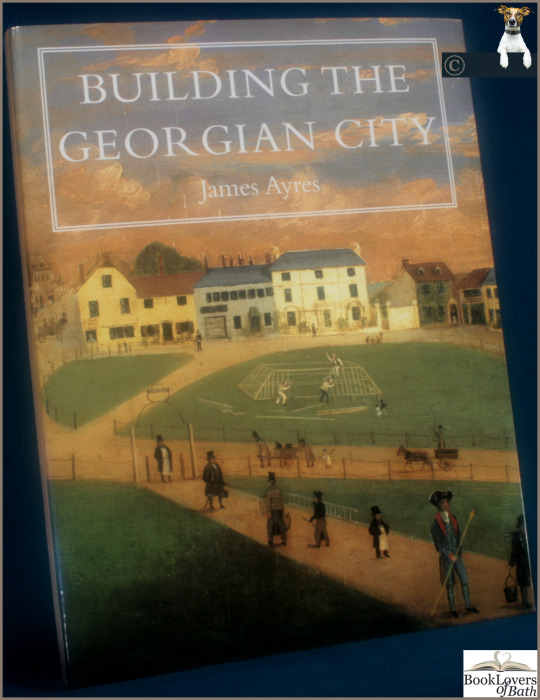
View On WordPress
#0-3000-7548-0#17th century architecture#18th century architecture#architects#architects patrons#architectural criticism#architectural history#architecture georgian period#baroque architecture#books by james ayres#british architects#british historical#building construction techniques#building materials#building regulations#christian architecture#fin de siecle#first edition books#georgian architecture#georgian building#gothic architecture#historical architecture#history architecture#modernism#neoclassicism#palladianism#renaissance architecture#romanesque architecture#signed books
0 notes
Text
ppls hot takes r getting a little too hot
#like i saw someone say they wanted grover to be the brains of the quest#when annabeth is right there??#and then someone was complaining abt how they ruined annabeths character in ep 4#like how so?? she continued to be smart outspoken and she babbled on abt architecture#and too many ppl r saying annabeth is gonna be the traitor lkek let’s use critical thinking skills shes risked her life for him#they’re not gonna be enemies#the luke defenders r funny tho#but i’ve seen too many wrong opinions abt annabeth#bitches jus wanna complain atp#let my girl live#lynx talks#pjo#percy jackson#percy jackon and the olympians#pjo spoilers#pjo tv show#walker scobell#annabeth chase#leah sava jeffries#hot take#grover underwood#rick riordan
43 notes
·
View notes
Text
what job can i get that will take up the minimum amount of time possible with the most amount of pay so i can do every hobby ever forever
#finally i have found my answer for what to do with my life and that is to be a hobbyist about everything#need a good job to support me and my beautiful children drawing printing crafting photography knitting blogging painting writing hiking#reading collecting dancing travelling to see the beauty of nature travelling to see museums travelling to see architecture travelling to see#gardens doing research writing papers nobody cares about learning about bugs playing board games engaging w media critically thinking about#themes and motifs etc etc and my future hobbies that i wish to pick up as well
11 notes
·
View notes
Text

#technology#digital art#makeup#artists on tumblr#digital illustration#poster#cars#critical role#comics#original character#cute#coquette#cat#celebs#deadpool#digital drawing#digital painting#design#diy#drawing#daddy's good girl#doodle#deadpool and wolverine#deadpool 3#deadpool x wolverine#deadpool movie#artwork#architecture#art#anime
7 notes
·
View notes
Text
I’m reading the first book in a trilogy of Librarians novels (I was so overjoyed to discover they exist omg) and I just. Jacob Stone being the absolute best, ily ily ily
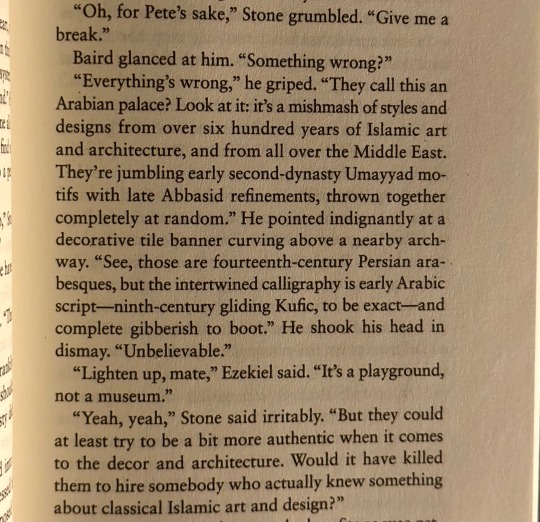
-from The Librarians and The Lost Lamp by Greg Cox
not only does he write in the character’s voices so incredibly spot-on and well, but this is one of the most refreshingly non-exoticizing, non-othering, even (incredibly!) culturally appreciative (not appropriative) depictions of Arab and Persian culture/art/land/history I’ve ever seen from a white, American author, which is just such a literary breath of fresh air!
I’ve only read about a third of the book so far so I can’t speak to the whole thing yet, but wow, for a book based on a show that didn’t always do.. great.. with respectful handling of nonwestern/non-European cultures, this is so amazing to see ♡
#book quotes#the librarians#the librarians and the lost lamp#anyways I’m enjoying this one so much and incredibly appreciative of how respectfully and even dare I say us-critically Greg Cox is writing#this book just 10/10 so far#like literally the passage above is actually criticizing the commercialization exoticizing othering careless disrespect that is too common a#and I just ?? it’s so refreshing and nice to see in a book#and ofc giving these lines to Jacob stone is so perfect because he WOULD say that he WOULD care <33#ps seeing the word “mishmash” in the context of discussing Islamic architecture#totally had me misreading it as “mishmish” at first 🍊 (<- closest thing to an apricot emoji I could find lol)#personal
21 notes
·
View notes